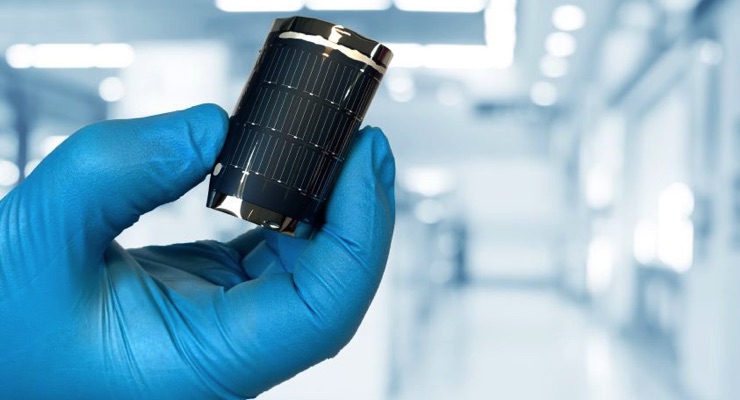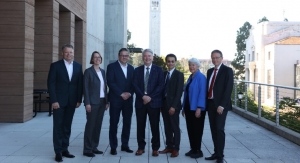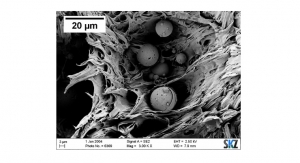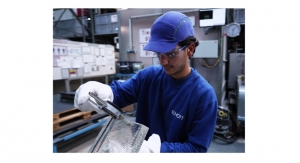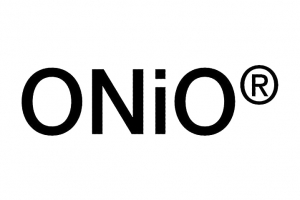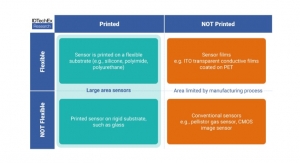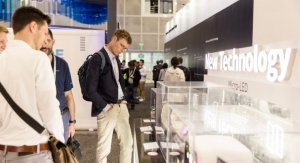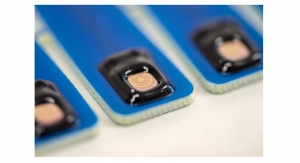Rainer Klose, Empa09.08.21
A new efficiency record of 21.4% for flexible CIGS solar cell on polymer film has been achieved by scientists at Empa. Solar cells of this type are especially suited for applications on roofs, transport vehicles or mobile devices.
A group of scientists at Empa has pushed the efficiency of flexible solar cells to a new limit. Independent measurements revealed an efficiency of 21.4 percent when these types of solar cells convert light into electricity. For comparison: the best efficiency of a non-flexible solar cell made of crystalline silicon is reported at 26.7 percent.
The details of the research achievement will be presented at the 38th European Photovoltaic Solar Energy and Conference and Exhibition (EU PVSEC) on 7 September 2021 by Romain Carron, group leader in the Laboratory for Thin Films and Photovoltaics headed by Ayodhya N. Tiwari.
High efficiency flexible solar cells are processed on a polymer film by a low temperature co-evaporation method for the growth of the thin film Cu(In,Ga)Se2 semiconductor that absorbs the light. Empa scientist Shiro Nishiwaki optimized the composition of the layer and alkali dopants for achieving performance improvement. The researchers then investigated the effects of combined heat and illumination exposure after the processing of solar cells and found a boost in the photovoltaic performance, which remains stable after several months. The solar cell efficiency of 21.38% was independently measured at Fraunhofer Institute for Solar Energy Systems ISE in Freiburg, Germany.
Setting New Records for 22 Years
Ayodhya Tiwari and his team are doing research on flexible thin film solar cells for more than 22 years. With their profound knowledge of the technology and the fundamental physical processes, they have achieved several efficiency records throughout the years. They started with 12.8% in 1999, moved to 14.1% (2005), 17.6% (2010), 18.7% (2011), 20.4% (2013) and 20.8% in 2019.
Flexible and lightweight solar modules with this technology are especially suited for applications on roofs and facades of buildings, greenhouses, transport vehicles, airships and portable electronics. Empa collaborates with Swiss company Flisom for roll-to-roll manufacturing of lightweight flexible solar modules for such applications.
The research and development work was supported by the Swiss Federal Office of Energy.
A group of scientists at Empa has pushed the efficiency of flexible solar cells to a new limit. Independent measurements revealed an efficiency of 21.4 percent when these types of solar cells convert light into electricity. For comparison: the best efficiency of a non-flexible solar cell made of crystalline silicon is reported at 26.7 percent.
The details of the research achievement will be presented at the 38th European Photovoltaic Solar Energy and Conference and Exhibition (EU PVSEC) on 7 September 2021 by Romain Carron, group leader in the Laboratory for Thin Films and Photovoltaics headed by Ayodhya N. Tiwari.
High efficiency flexible solar cells are processed on a polymer film by a low temperature co-evaporation method for the growth of the thin film Cu(In,Ga)Se2 semiconductor that absorbs the light. Empa scientist Shiro Nishiwaki optimized the composition of the layer and alkali dopants for achieving performance improvement. The researchers then investigated the effects of combined heat and illumination exposure after the processing of solar cells and found a boost in the photovoltaic performance, which remains stable after several months. The solar cell efficiency of 21.38% was independently measured at Fraunhofer Institute for Solar Energy Systems ISE in Freiburg, Germany.
Setting New Records for 22 Years
Ayodhya Tiwari and his team are doing research on flexible thin film solar cells for more than 22 years. With their profound knowledge of the technology and the fundamental physical processes, they have achieved several efficiency records throughout the years. They started with 12.8% in 1999, moved to 14.1% (2005), 17.6% (2010), 18.7% (2011), 20.4% (2013) and 20.8% in 2019.
Flexible and lightweight solar modules with this technology are especially suited for applications on roofs and facades of buildings, greenhouses, transport vehicles, airships and portable electronics. Empa collaborates with Swiss company Flisom for roll-to-roll manufacturing of lightweight flexible solar modules for such applications.
The research and development work was supported by the Swiss Federal Office of Energy.

